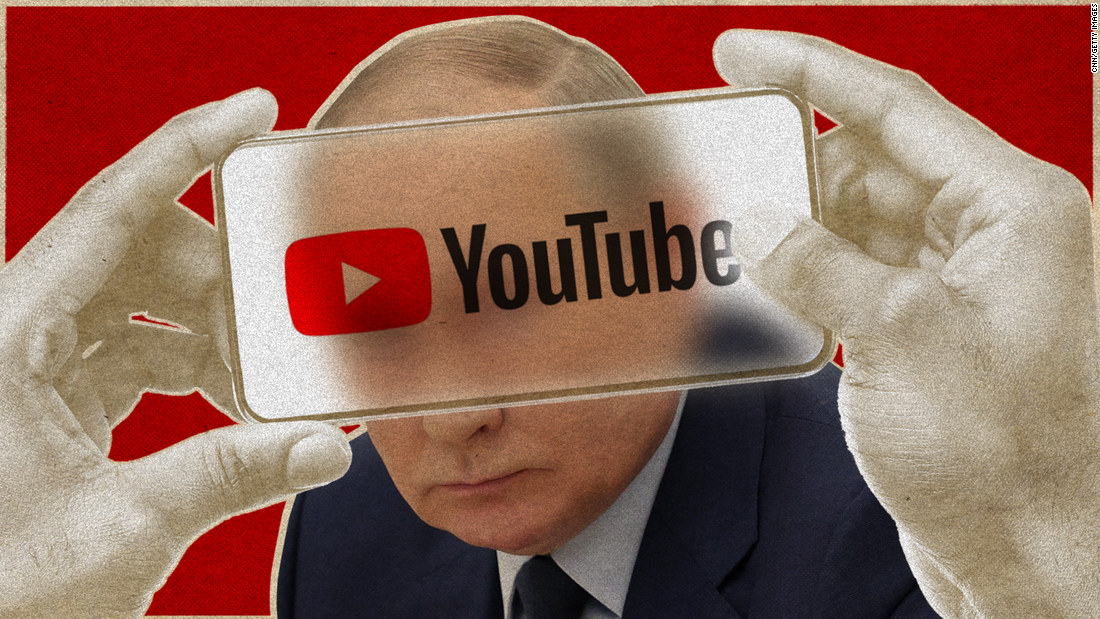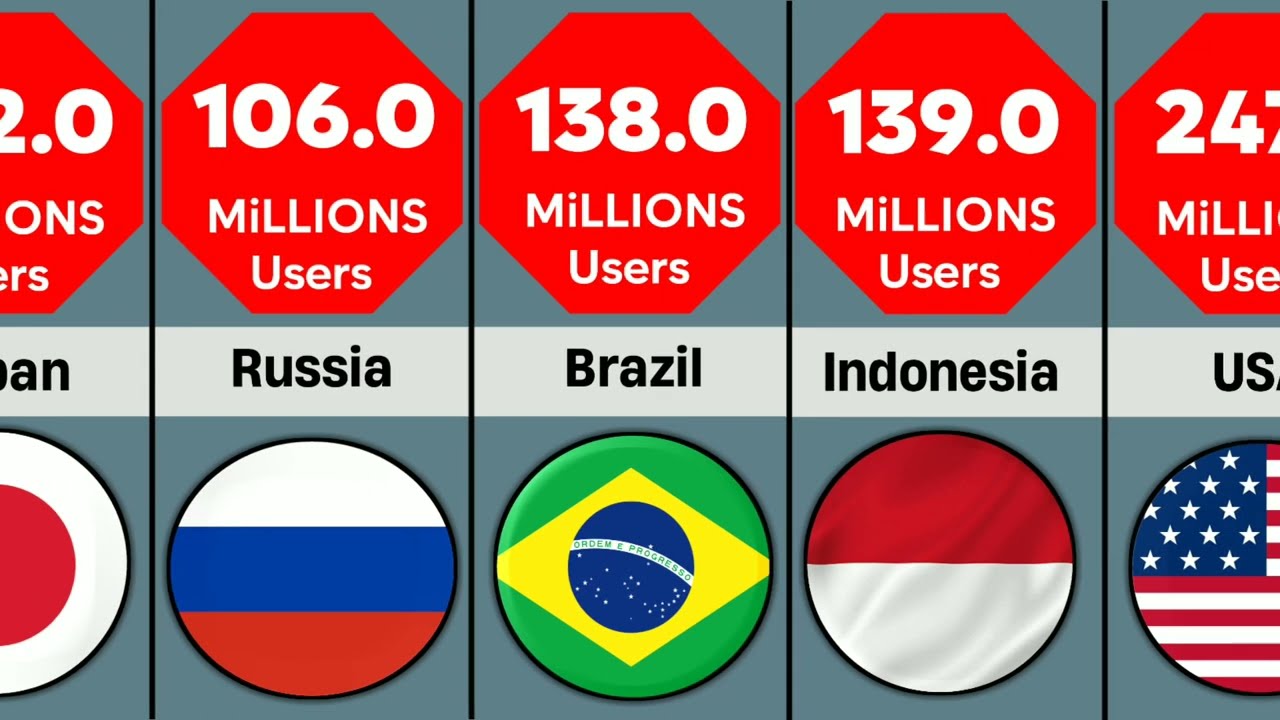YouTube has transformed the way we consume content, making it accessible to billions of users worldwide. As a platform that thrives on user-generated videos, it offers a diverse array of content, from educational tutorials to entertainment. However, its global reach isn’t uniform; various countries have different levels of access to YouTube. Understanding these nuances is essential, especially when considering geopolitical factors that influence digital platforms. In this post, we will explore how
Current Status of YouTube in Russia

The situation regarding YouTube’s accessibility in Russia is complex and constantly evolving. As of now, YouTube remains accessible to users within the country, but there are notable restrictions and challenges. Here’s a breakdown of the current status:
- General Accessibility: YouTube is accessible in Russia, with millions of users actively engaging with content daily.
- Government Regulations: The Russian government has imposed regulations on online content, which can affect the visibility of certain videos. Content deemed inappropriate or against state policies may be blocked or removed.
- Impact of Sanctions: Ongoing international sanctions and geopolitical tensions have led to a push for greater control over digital platforms. This means that while YouTube is available, the content might be subject to scrutiny.
- Local Alternatives: In response to these challenges, Russian alternatives like VKontakte and Yandex.Video have gained popularity, offering users local content without the same level of scrutiny as YouTube.
Overall, while YouTube is still operational in Russia, navigating its waters requires awareness of the local digital landscape, including potential restrictions and the rise of homegrown platforms.
Also Read This: Do Employers Pay Attention to Your YouTube Comments? Exploring Social Media and Job Searches
Legal and Political Factors Impacting YouTube's Availability

YouTube's accessibility in Russia has been significantly influenced by a multitude of legal and political factors. The Russian government has exercised tight control over internet resources, leading to a complex relationship with platforms like YouTube. In recent years, the government has implemented various laws aimed at regulating digital content, which includes:
- Anti-Extremism Laws: These laws allow the government to block content deemed extremist or harmful. YouTube has faced pressure to comply with these regulations, leading to the removal of certain videos.
- Content Moderation Requirements: Russian laws require platforms to monitor and remove content that violates local laws. This has created a compliance burden for YouTube, as it must navigate the nuances of Russian legislation.
- Data Localization Laws: Russian laws mandate that user data must be stored within the country. YouTube has had to adjust its operations to comply with these regulations, which can complicate its availability.
Additionally, geopolitical tensions, particularly between Russia and Western nations, have further complicated YouTube’s situation. Sanctions and political motivations often shape public discourse, leading to heightened scrutiny of Western platforms like YouTube. This dynamic creates an environment where accessibility is not just about technology but also about the underlying political climate.
Also Read This: Setting Time Limits on YouTube for PC How to Manage Your Screen Time
Comparison with Other Countries' Access to YouTube
When we examine YouTube's accessibility in different countries, it becomes evident that the platform faces diverse challenges based on local laws, culture, and political environments. Here’s a brief comparison:
| Country | Access Status | Key Factors Influencing Access |
|---|---|---|
| Russia | Restricted | Government control, content regulation laws, geopolitical tensions |
| China | Blocked | Strict censorship policies, Great Firewall, alternative platforms |
| United States | Fully Accessible | Freedom of speech protections, minimal regulation |
| India | Mostly Accessible | Regulatory challenges, local content restrictions |
As seen in the table, countries like China block YouTube entirely, while others like the U.S. enjoy full access. Russia's middle ground reflects its unique political landscape, where access can be limited but not completely severed. Such comparisons highlight the intricate relationship between digital platforms and governmental control, showcasing how local contexts shape online experiences.
Also Read This: Who Is the Worst YouTuber? Examining Controversial YouTubers and Their Impact
User Experience and Alternatives in Russia
Using YouTube in Russia can be a mixed bag. While the platform is accessible, users often face challenges such as slower internet speeds and occasional regional restrictions on certain content. This can lead to buffering issues and overall frustration when trying to enjoy videos. Despite these hurdles, many Russians continue to use YouTube as their go-to platform for video content.
One of the standout features of YouTube is its vast library of content, ranging from music videos to educational tutorials. This diversity allows users in Russia to find something that caters to their interests. However, *alternative platforms* have also emerged due to regional preferences and restrictions. Here are some notable alternatives:
- VK Video: This platform is integrated with VKontakte, Russia's leading social network, enabling users to share and discover videos among friends.
- Ok.ru: A popular social network that offers video content, allowing users to upload and share videos easily.
- Rutube: Positioned as the Russian equivalent of YouTube, Rutube focuses on local content and has gained traction among Russian users.
These alternatives often cater more specifically to cultural and regional tastes, which can enhance the user experience. In a rapidly changing digital landscape, it's essential for users to explore various platforms to find the best fit for their needs.
Also Read This: How Much Does Fearfully Created Make on YouTube? A Look at Their Revenue
Future Prospects for YouTube in Russia
The future of YouTube in Russia appears to be fraught with uncertainty but also potential. As geopolitical dynamics evolve, the accessibility and usability of YouTube may shift significantly. Currently, YouTube remains popular, but the platform must navigate a complex landscape of regulations and user expectations.
One significant factor is the increasing scrutiny from the Russian government over online content. If restrictions tighten, YouTube may face challenges in maintaining its user base. However, there’s a silver lining: YouTube has been proactive in adapting to local regulations in various countries.
Looking ahead, here are some possible scenarios for YouTube in Russia:
| Scenario | Description |
|---|---|
| Increased Restrictions | YouTube may have to comply with stricter regulations, limiting content availability. |
| Partnerships | Collaborations with local platforms could enhance accessibility and content variety. |
| Emerging Competitors | Local platforms like Rutube may gain more traction, influencing YouTube's user base. |
In summary, while YouTube's presence in Russia is currently strong, its future will largely depend on its ability to adapt to local regulations and competition. The coming years will be crucial in shaping how Russians access and engage with video content online.
Is YouTube Allowed in Russia? Understanding YouTube’s Accessibility Worldwide
YouTube, the world’s largest video-sharing platform, has experienced varying levels of accessibility in different countries, particularly in Russia. As of 2023, YouTube remains accessible within Russian borders, but its availability is influenced by ongoing political and regulatory dynamics.
In recent years, the Russian government has tightened its control over the internet, imposing regulations that affect social media platforms and online content. Here’s a breakdown of the current situation:
- Current Status: YouTube is operational in Russia, though subject to scrutiny and potential restrictions.
- Government Regulations: The Russian government has implemented laws requiring platforms to remove content deemed extremist or harmful.
- Content Moderation: YouTube has faced pressure to comply with local laws, which sometimes leads to video removals or account suspensions.
However, despite these challenges, YouTube has remained a vital source of information and entertainment for millions of Russians. The platform serves various purposes, from educational content to entertainment, and fosters creativity through its user-generated videos. Here are some key points regarding YouTube’s role in Russia:
| Aspect | Details |
|---|---|
| Users | Over 80 million monthly active users in Russia. |
| Popular Content | Vlogs, tutorials, music videos, and news channels. |
| Challenges | Censorship, content removal requests, and potential bans. |
In summary, while YouTube is currently allowed in Russia, its future is uncertain, heavily influenced by governmental policies and the global political climate. The platform remains a crucial channel for information and expression, reflecting the ongoing battle for digital freedom.
Conclusion: The Importance of Digital Access
 admin
admin








